Swinburne hosts first Australian node in IAAC Global Summer School
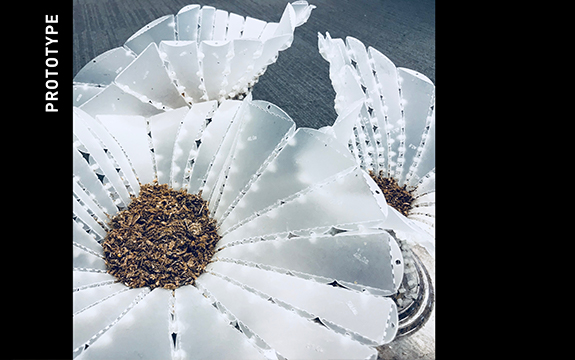
In Summary
- Advanced Architecture of Catalonia Global Summer School nodes push boundaries in international workshops
- Australian node explored network-like root systems of mushrooms
- Restorative mechanisms for derelict buildings, biodegradable caskets, mycelium fashion and architecture that cleans contaminated lands
In early July, from Barcelona and New York to Muscat and Tehran, enterprising researchers and students in the Institute for Advanced Architecture of Catalonia (IAAC) Global Summer School nodes pushed boundaries in international workshops with the theme: Digitize.
Swinburne’s architectural design program has introduced Australia into this exciting network. Australian participants from design and architecture pushed the limits of how design systems in nature can be adapted to create man-made complex geometries.
Under the local banner of, “Bio-digital futures: from coding to cultivating”, the southern hemisphere Summer School was hosted in a chilly mid-Winter in Melbourne.
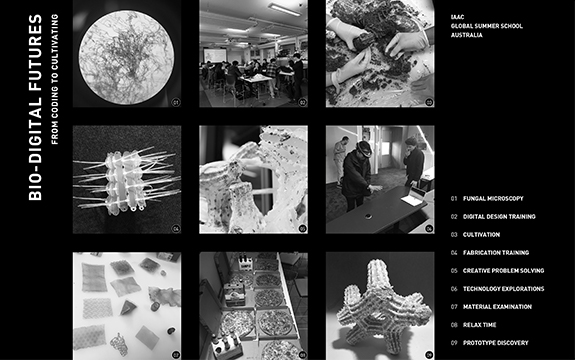 Working with experimental bio-digital futures.
Working with experimental bio-digital futures.
“We represented Australia in the IAAC, Global Summer School network. The progress and outcomes were shared with sixteen cities,” explains Canhui Chen, Australia’s IAAC Global Summer School Lead and Lecturer in Architectural Design at Swinburne. The network shared presentations by academic leaders in various fields.
The Summer School’s focus of exploration was the network-like root systems of mushrooms, botanically known as mycelium. Participants explored the relationships between biology and architecture by asking, 'How can we work with nature to grow our designs? Can we harmonise our digital designs with nature’s design systems?'
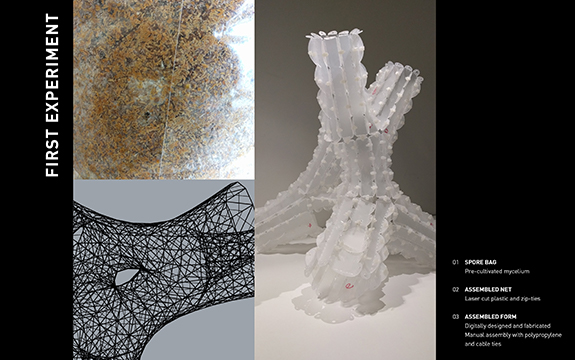 Mycelium spores, assembled net and assembled form.
Mycelium spores, assembled net and assembled form.
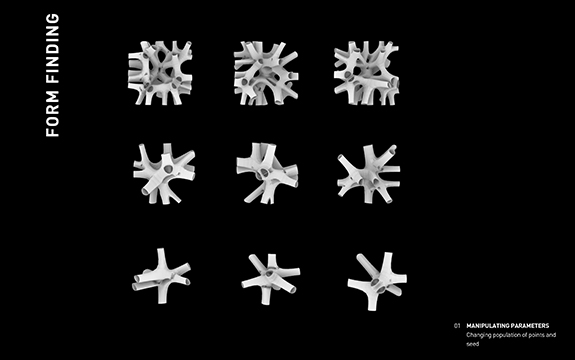 Manipulating form parameters.
Manipulating form parameters.
“This isn’t new at all, but what we attempted to do was to push the limits of how design systems in nature can be adapted and applied to complex man-made geometries. Geometries that are created by computational designs and digital fabrication techniques,” explains Mr Chen.
Summer School participants learnt by doing rather than by thinking and theorising. This introduced a liberating way to come up with ideas quickly.
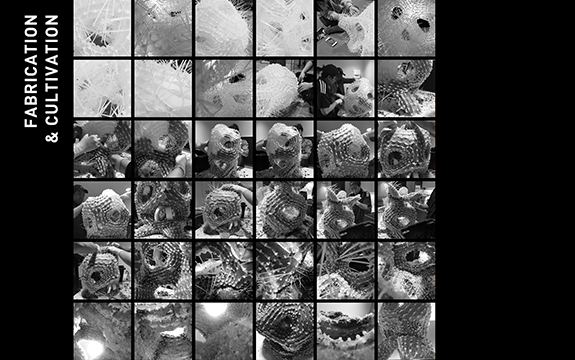 Fabrication of moulds and cultivation of mycelium.
Fabrication of moulds and cultivation of mycelium.
“When participants encountered problems, they solved these on the go and learnt to improvise their process. This ‘doing’ process is particularly important, and tactility offers an experiential dimension to learning,” says Mr Chen.
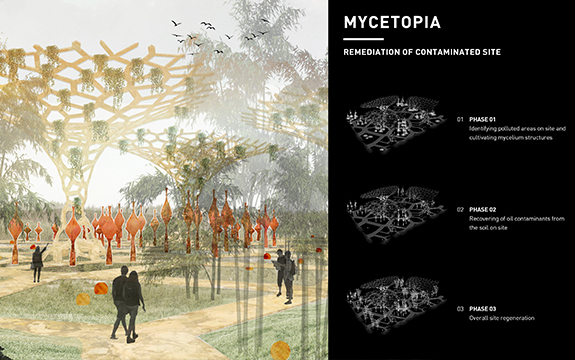 Mycetopia, a remediation of a contaminated site.
Mycetopia, a remediation of a contaminated site.
Participants learnt by “reflection-in-action” by provoking questions about their process and objectives. Participants engaged with their own design intuition and design decisions.
“This is like asking someone to have an internal dialogue with themselves to reveal how and why they design the way they do,” he says.
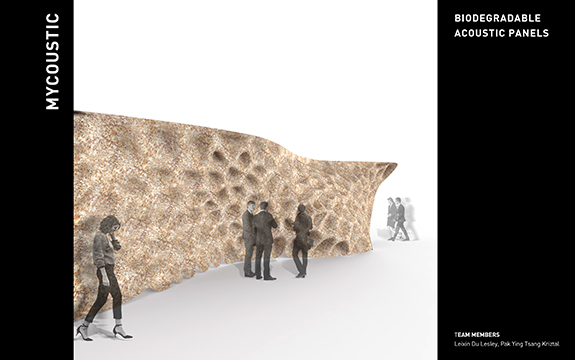 Biodegradable mycelium acoustic panels by Leixin Du Lesley and Pak Ying Tsang Kriztal.
Biodegradable mycelium acoustic panels by Leixin Du Lesley and Pak Ying Tsang Kriztal.
“We engaged students in critical thinking, creative explorations, problem-solving technical issues and pushed them outside their comfort zone so they would learn and grow as designers,” Mr Chen says.
The fun of working together and peer encouragement to take risks in design, pushed students to achieve extraordinary outcomes within two weeks.
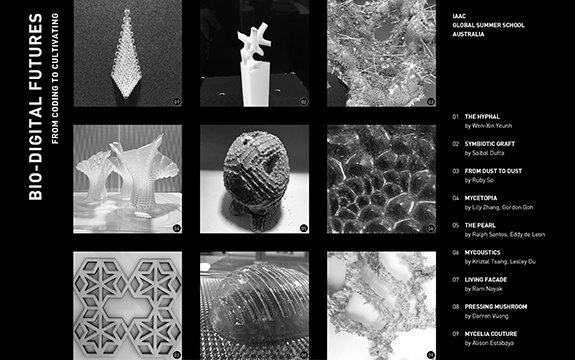 Final student concepts
Final student concepts
The combination of participant interests, Swinburne’s architectural and digital design expertise; the School of Science Microbiology and Biology Laboratory, with expert in bio-cultivation, Dr Rebecca Alfred; and the Prototyping Laboratory’s expertise in digital fabrication; worked together to create restorative mechanisms for derelict buildings, biodegradable caskets, mycelium fashion and architecture that cleans contaminated lands.
Experts across disciplines - Associate Professor John Sadar, Swinburne School of Design; Debbie Ryan, co-owner of McBride Charles Ryan; Damon van Horne, Principal, Grimshaw Architects; and Dr Rebecca Alfred, Swinburne School of Science sat on the review panel.
Participant works were shared in an IAAC Global School online presentation shared with architectural and design enthusiasts worldwide.

